Author: Tian Hui
The sales of Hongguang MINI EV may continue to increase.
On September 9th, the Ministry of Industry and Information Technology announced the vehicles applying for the 348th batch of “Announcement on Road Motor Vehicle Manufacturing Enterprises and Products”, among which the long-endurance version of Hongguang MINI EV was included.
Hongguang MINI EV has added Chongqing factory for production and a new version with a larger battery capacity, which is rumored to be a 300-kilometer endurance version of MINI EV.
In the 348th batch of automobile announcements, a total of 298 new energy vehicles were applied, a decrease of 4% compared to the previous batch. Among them, there were 55 new energy passenger cars, a decrease of 10% compared to the previous batch.
Pure electric vehicle models are still the main type for application by various car companies, and many high-end pure electric cars have been applied, including SAIC IM L7, NIO ET7, and Changan Ford Mustang Mach-E, etc.
From the classification based on levels, the number of pure electric micro-cars are the highest, reaching 15, and among them, SAIC-GM-Wuling alone applied for 10 micro-electric cars. In the pure electric SUV category, the compact and mid-size SUV models are the main types applied for.
In terms of power batteries, NIO ET7 applied for a version that uses a combination of lithium iron phosphate/three-element lithium power batteries. This is the first time that an electric vehicle with mixed battery material types has been applied for.
In terms of intelligence, a total of 35 new cars equipped with L2 level intelligent auxiliary driving features such as ACC and LKA were announced, accounting for 64% of the total of 55 new cars. Among them, the NIO ET7 was equipped with a laser radar.
High-Profile Models: Hongguang MINI EV Long-Endurance Edition / NIO ET7 / IM L7…
In the announcement of the new batch of vehicles, C-class cars such as IM L7 and NIO ET7 are the protagonists, but the most notable model is still the popular Hongguang MINI EV.
SAIC-GM-Wuling applied for a new version of Hongguang MINI EV in this batch of announcements with increased vehicle length, wheelbase and battery capacity, and its endurance range is expected to exceed 300 kilometers.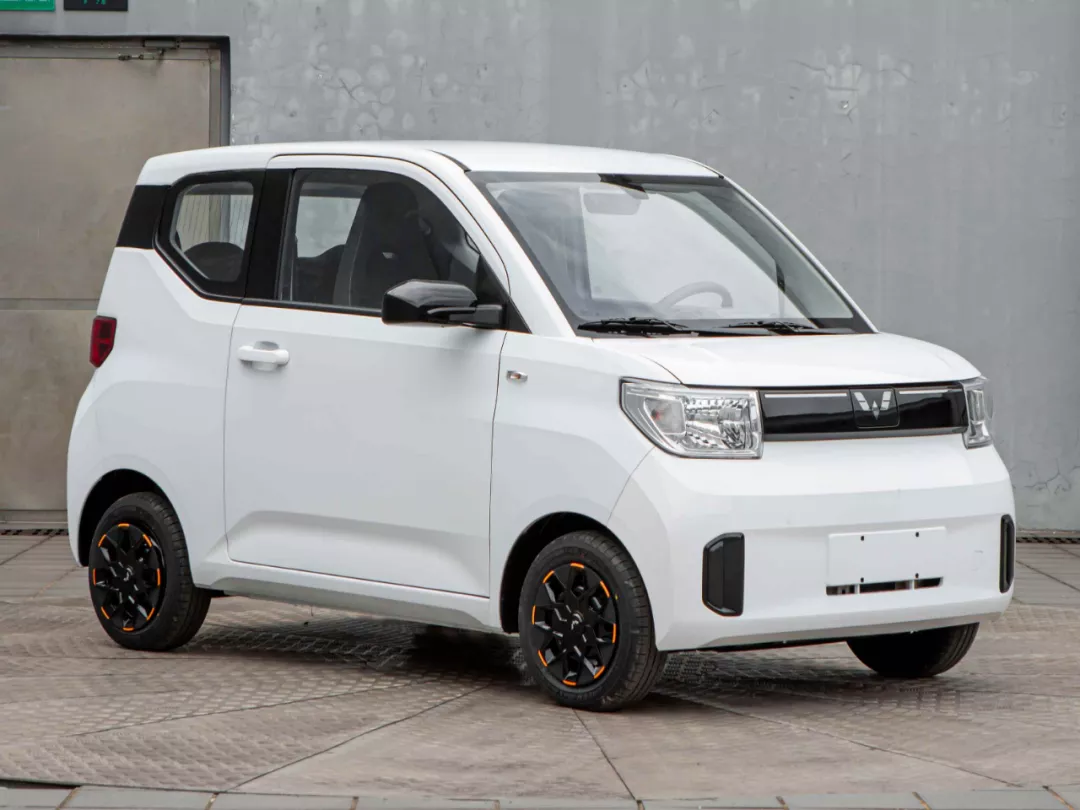
In terms of appearance, the new Hongguang MINI EV has been lengthened at the B-pillar position, with the body length increased to 2997mm, 77mm longer than the current model. The added length is mainly located between the two axles, with the wheelbase extended by 70mm to 2010mm. In terms of styling, the color matching of the wheel hubs has been changed, and the rearview mirrors have been adjusted to black.
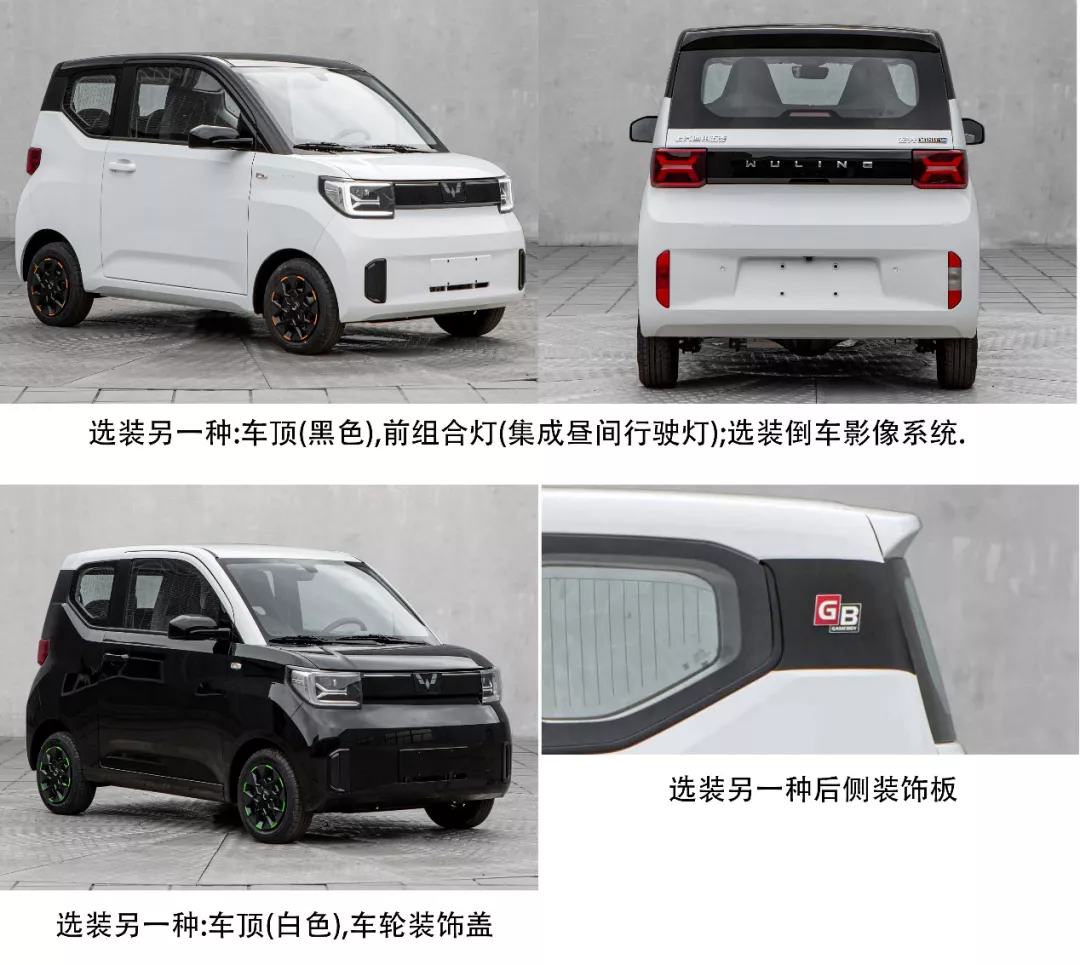
From the optional packages, the new Hongguang MINI EV declared this time may be named the GameBoy version.
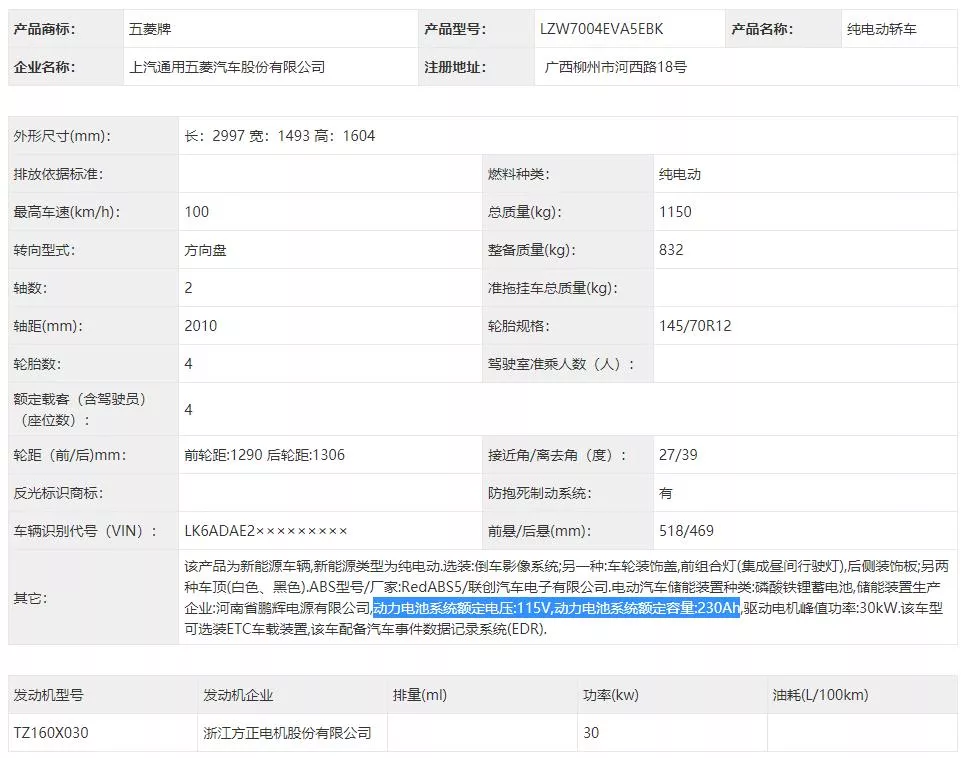
The biggest change in the new Hongguang MINI EV declared this time is the change of core parameters. From the declared data, the rated battery capacity has been increased to 230Ah, and the voltage remains at 115V without any changes to the low voltage platform. The battery pack charged capacity has been increased to 26.45kWh.
For reference, the current Hongguang MINI EV Macaron version has a battery capacity of 13.8kWh and a range of 170 kilometers. After the battery capacity is upgraded to 26.45kWh, the new Hongguang MINI EV’s range is expected to exceed 300 kilometers.
The NIO ET7 has completed its first declaration in this batch of announcements.
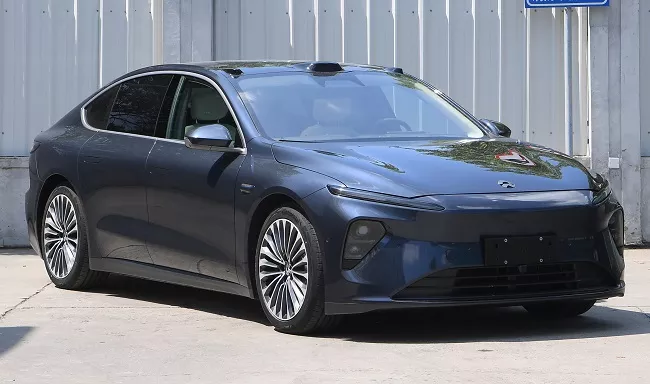
From the declaration image, the appearance of the NIO ET7 is the same as the version that appeared at the launch event. The NIO ET7 continues the family design style of NIO’s separated headlights, but differs from ES series models in the design of the front bumper area and other parts.
The tower-based intelligent assisted driving hardware layout scheme is a significant difference between the NIO ET7 and other vehicles.According to official information from NIO, the intelligent driving assistance system perception hardware part of NIO ET7 adopts the NIO Super Sensing System called Aquila, which has a total of 33 high-precision sensors, including ultra-long-range high-precision LiDAR, 11 8-megapixel high-definition cameras, enhanced driver perception, 5 millimeter-wave radars, 12 ultrasonic sensors, redundant high-precision positioning units and V2X car-road collaborative perception.
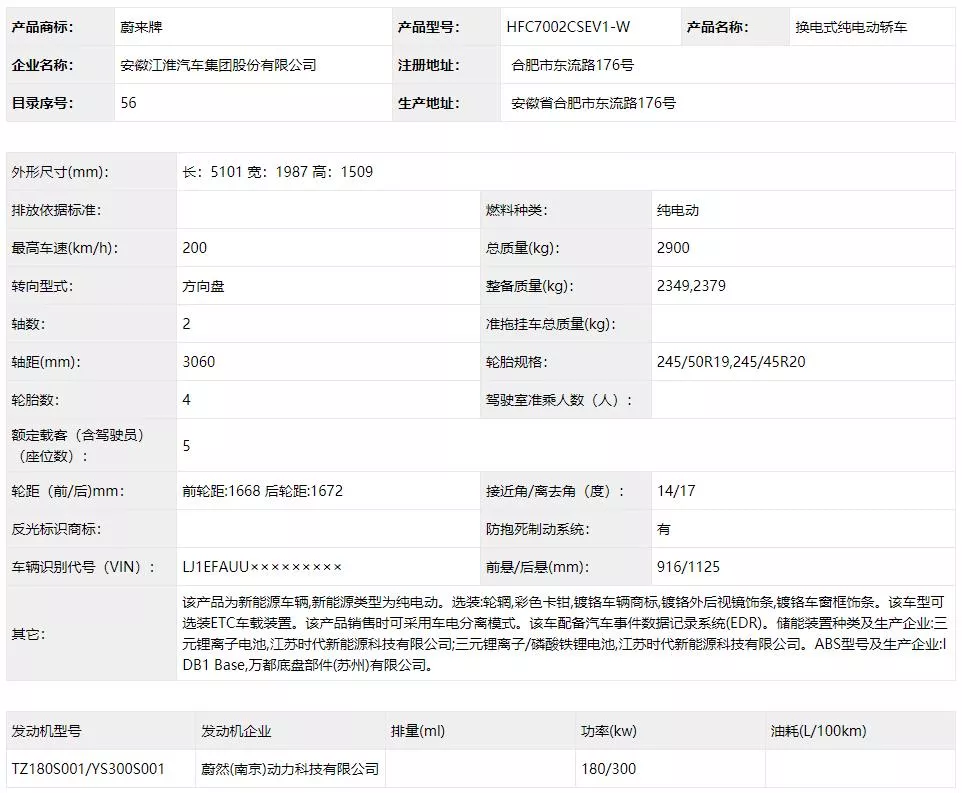
NIO ET7 is declared as an electric car product type that supports battery swapping. NIO has planned three battery versions for this car, namely 70kWh, 100kWh, and 150kWh solid-state battery versions.
In terms of power, NIO ET7 adopts a four-wheel-drive design with a front motor power of 180kW, a rear motor power of 300kW, and a total motor power of 480kW, with an acceleration time of 0-100km/h in 3.9 seconds.
In terms of cruising range, NIO ET7 will have three versions of 500km, 700km, and 1000km.
A highlight of NIO ET7 in this batch of filings is that the car is the first model to apply for a battery pack with mixed cathode materials, and in the future, the car will have both ternary lithium-ion battery pack and ternary lithium/iron phosphate mixed cathode battery pack versions.
SAIC’s first car- SAIC R Auto’s IM L7 finally made its appearance in the Ministry of Industry and Information Technology’s automotive announcement.
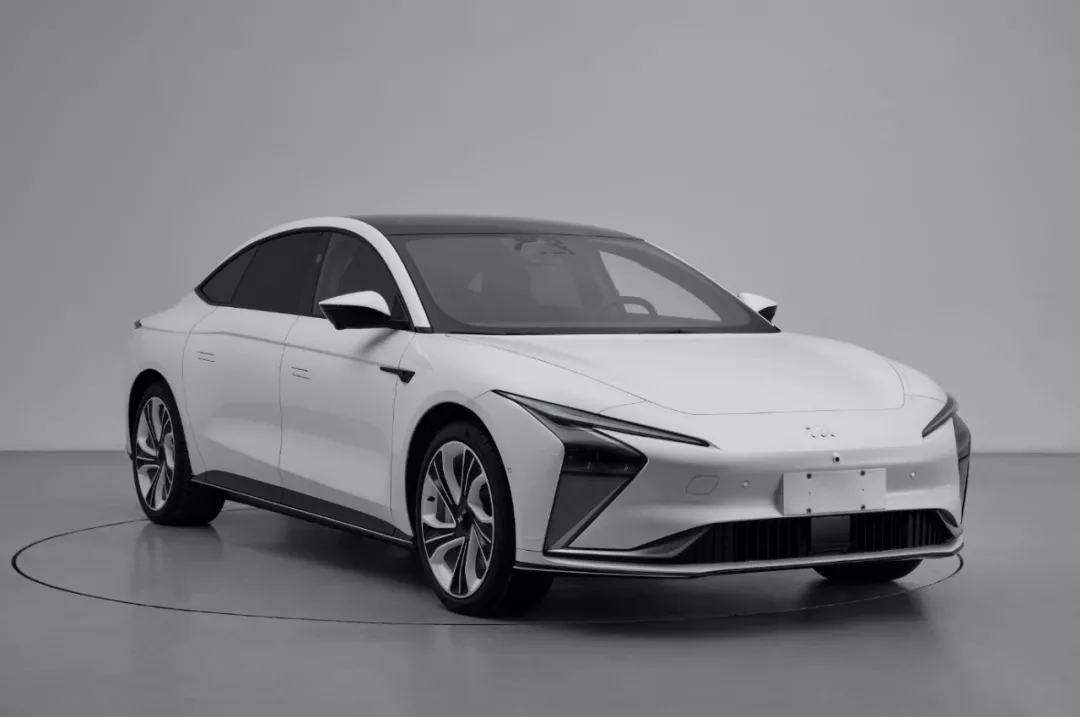
As for the appearance, the biggest feature of SAIC R Auto’s IM L7 is that it adopts DLP digital projection headlights, which can project car language, navigation, and other information through a 2.6 million-pixel digital headlight system.
The car’s drag coefficient has been optimized and has reached 0.21Cd, which is among the best in mass-produced cars.
SAIC R Auto’s IM L7 has a rich selection of optional equipment, among which an important option is the roof camera system. The system places high-definition cameras for the assisted driving system in the roof’s moving parts. When in use, it automatically rises, which can improve the perception capability of the assisted driving system.
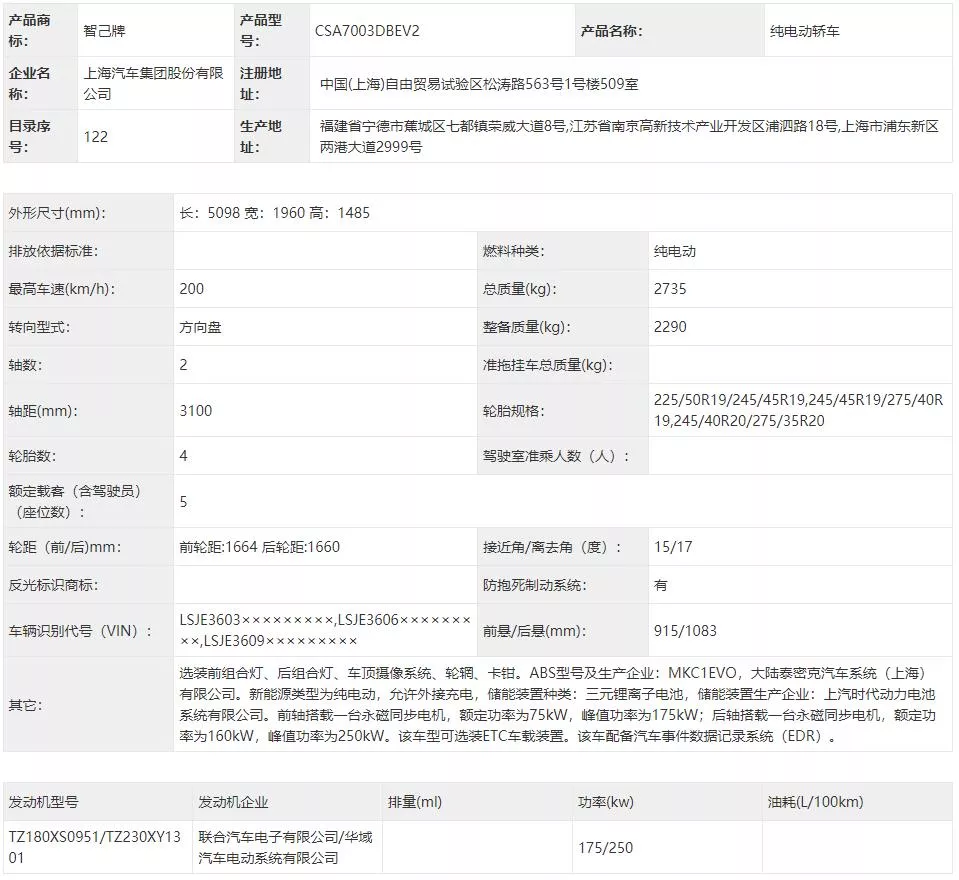 In terms of specifications, in the announcement of the Zhi Qi L7, both four-wheel drive and two-wheel drive versions were declared. The four-wheel drive version adopts a front-mounted 175kW and rear-mounted 250kW dual-motor combination, with a total output power of 425kW and an acceleration time of 0-100km/h in just 3.9 seconds. The two-wheel drive version adopts a rear-wheel drive layout and a motor power of 250kW.
In terms of specifications, in the announcement of the Zhi Qi L7, both four-wheel drive and two-wheel drive versions were declared. The four-wheel drive version adopts a front-mounted 175kW and rear-mounted 250kW dual-motor combination, with a total output power of 425kW and an acceleration time of 0-100km/h in just 3.9 seconds. The two-wheel drive version adopts a rear-wheel drive layout and a motor power of 250kW.
As for cruising range, according to the official data from Zhi Qi, the range will reach 700 kilometers.
In this batch of announcements, Changan Ford declared the MUSTANG Mach-E model for the first time.
Changan Ford submitted a total of three versions of the MUSTANG Mach-E in this batch of announcements, and the Chinese brand name for the car will be called “Ma Si Dan (MUSTANG)”.
In previous announcements, the domestic version of the Ford MUSTANG Mach-E will use BYD batteries. However, specific battery core manufacturers were not marked in the information declared in this batch.
The car’s drive motor is imported from LG Electronics. Judging from this condition, the progress of the domestication of the Ford MUSTANG Mach-E does not seem optimistic.
Since the popular sales of the Hong Guang MINI EV, micro electric cars have become a relatively popular category in the new car announcements issued by the Ministry of Industry and Information Technology. Among the 348 batch announcements, SAIC-GM-Wuling alone declared 10 models of micro electric cars, while other car companies have also declared multiple micro electric car models.
In this batch of announcements for micro electric cars, Cheetah Auto declared the Jia Yuan KOMI model, Dongfeng Xiaokang declared Candy, and Chery declared the QQ ice cream model.
In plug-in hybrid models, SAIC Roewe declared the RX5 ePLUS model for the first time.## Dominance of Lithium Iron Phosphate (LFP) batteries
In terms of power batteries, the batch release shows that Lithium Iron Phosphate (LFP) batteries are dominant.
Out of 55 new energy passenger vehicles, 30 models use LFP batteries while 23 use ternary lithium batteries.
The usage amount of LFP batteries is the highest in the micro electric vehicle segment with 13 out of 15 models using LFP batteries. In addition, in plug-in hybrid electric vehicles, LFP batteries account for over 50%.
Guangqi Aion has applied for a LFP battery version of its AION V Plus model. Except for the flagship model AION LX, all AION series models have LFP battery versions. The high-rate charging battery version of the AION V Plus from JUWYTAN has been applied for once again in this batch release, but the weight of the car has increased, which could perhaps result in a higher-range version.
NIO’s ET7’s ternary lithium/LFP hybrid power battery that was applied for in this batch release is a major highlight.
In January and April of this year, NIO applied for patents for ternary lithium/LFP hybrid power batteries that involve battery pack state of charge (SOC) calculation and cell layout.
In the SOC calculation patent, NIO achieved precise estimation of the whole pack SOC through the ternary lithium part, and supported dynamic adjustments due to different battery decay rates, so that the SOC of the ternary part can accurately reflect the whole pack SOC.
According to patent information, NIO’s ternary lithium/LFP hybrid power battery has multiple cell layout methods, and the ratio of iron phosphate to ternary batteries in the battery pack can be 5:1, 3:1, or 1:1.The utility of the ternary lithium/phosphate-iron mixed power battery pack in practical use requires market verification, but this type of hybrid material power battery pack is first applied to NIO vehicles supporting battery swapping, or related to the long lifespan and low cost of phosphate-iron.
Intelligent driving cars break through 1000 Tops in computing power
Out of the 55 new energy passenger cars declared in this batch announcement, 35 models are equipped with L2-level intelligent assisted driving configurations that include ACC and LKA functions.
ACC full-speed adaptive cruise and LKA lane departure warning are the two most important functions in L2-level intelligent assisted driving, controlling vehicle longitudinal and lateral movements respectively. Models supporting both of these functions can be considered to have the basic ability of L2-level intelligent assisted driving.
In this batch announcement, several models including SAIC IM L7, NIO ET7, Xpeng P5, and Xpeng P7, in addition to L2-level intelligent assisted driving, also have higher-level functions such as lane merging assistance and navigational assisted driving.
In terms of computing power, the four models mentioned above use Nvidia’s assisted driving chips as the main computing power chip. Among them, NIO ET7 uses four Orin series chips developed by Nvidia, with a total computing power exceeding 1000 Tops.
ET7 is also the first smart EV car that applied Orin chips for declaration.
In this batch announcement, BYD declared the Song PLUS EV model that uses Huawei’s motor version.
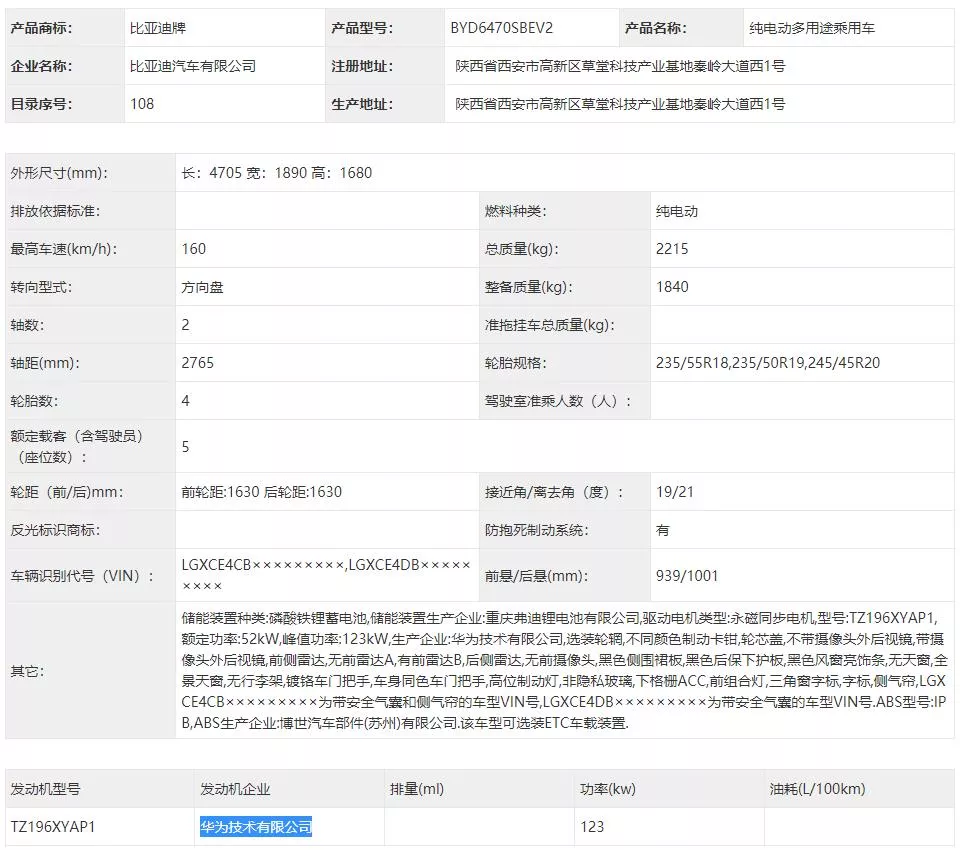
In the past two years, cooperation between BYD and Huawei has gradually deepened. Previously, the two sides had released new product platforms for each other and announced cooperation in the fields of smart car machines, 5G, and other areas. The declaration of the Huawei motor version by BYD is another example of promoting cooperation between the two sides, after they expanded cooperation in intelligent cockpit, motor and other hardware. The future prospects of whether BYD and Huawei will cooperate in the field of intelligent assisted driving are worth keeping an eye on.
This article is a translation by ChatGPT of a Chinese report from 42HOW. If you have any questions about it, please email bd@42how.com.